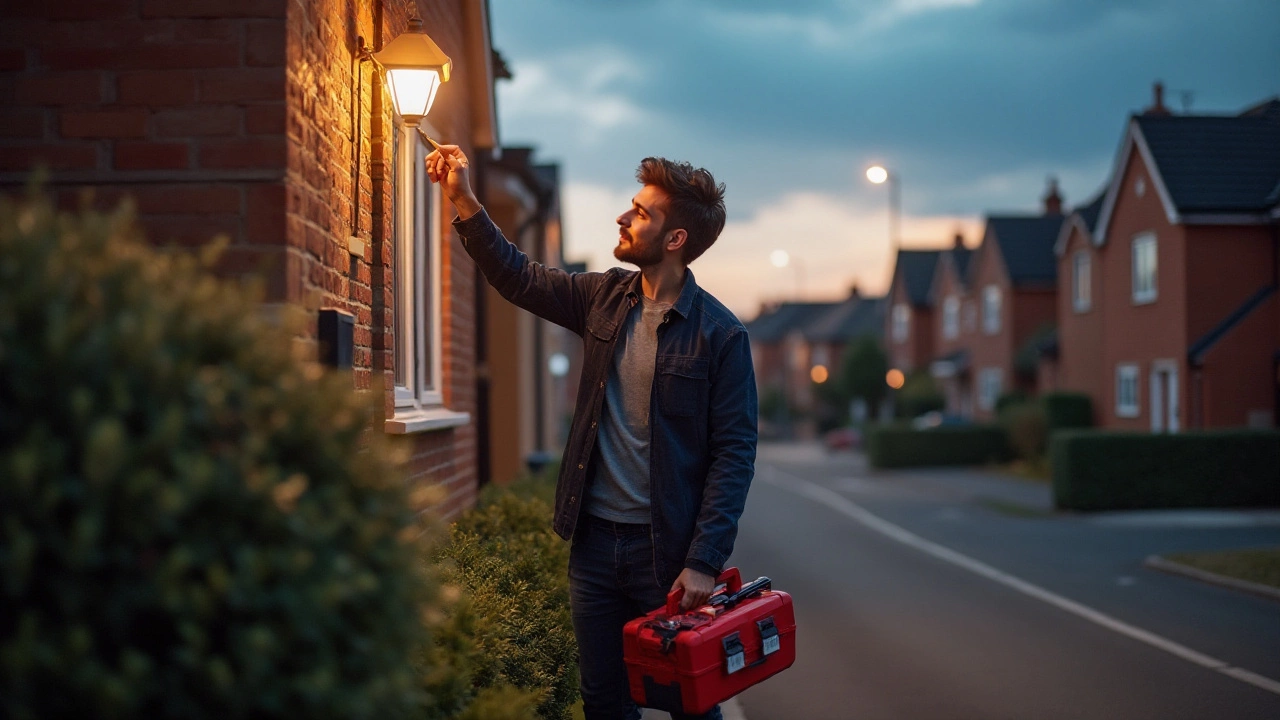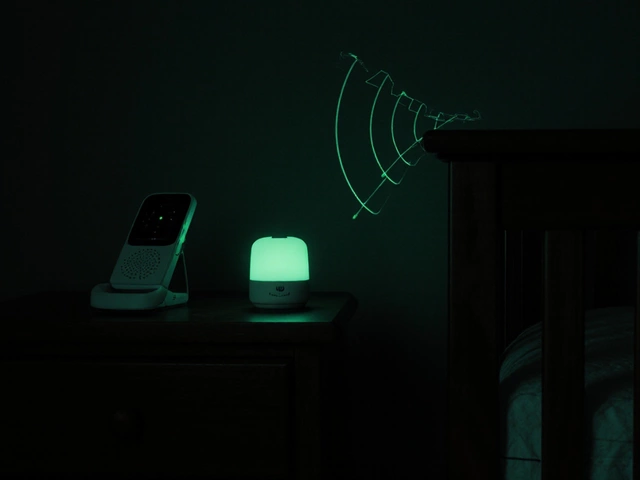Outdoor LED security lights play a crucial role in ensuring the safety and security of your home properties. These lights are celebrated for their energy efficiency and long lifespan. However, like any other system, they can occasionally malfunction, leaving you in the dark when you need them most.
In this article, we'll delve into what steps you can take when your LED outdoor lighting isn't illuminating your surroundings as it should. From simple troubleshooting to recognizing when it's time to call an expert, we'll walk you through the process, helping ensure that your outdoor spaces are well-lit and secure.
- Understanding LED Security Lights
- Troubleshooting Common Issues
- Preventative Maintenance Tips
- When to Call in the Experts
Understanding LED Security Lights
The world of outdoor security lighting has significantly transformed with the advent of LED lights. Known for their energy efficiency, durability, and longevity, LED lights have become the preferred choice for illuminating homes and ensuring outdoor security. At their core, LEDs, or Light Emitting Diodes, convert electricity into light through semiconductor materials, making them highly efficient. Unlike traditional incandescent bulbs that lose a lot of energy as heat, LEDs focus on light emission, which is why they are both eco-friendly and cost-effective over time.
One of the standout features of LED lights is their lifespan. While incandescent bulbs may last around 1,000 hours, many LED lights can illuminate your space for up to 25,000 hours or more, making them a worthwhile investment despite their higher initial cost. Additionally, their robust nature means they're ideal for outdoor settings, weathering elements like rain and wind with ease. This resilience significantly reduces frequent replacements, allowing homeowners to enjoy seamless security.
The versatility of outdoor security LED lights is another reason for their popularity. They come in a wide range of shapes, sizes, and colors, each serving different security needs. Whether you need spotlights to deter intruders, floodlights for broad area coverage, or pathway lights to guide your way safely home, there's an LED option for every scenario. Moreover, many modern LED lights include motion sensors, enhancing security by illuminating areas only when needed and conserving energy when not.
Interestingly, recent market surveys have shown a steady growth in demand for LED security lighting solutions. A study conducted by the Lighting Research Center noted that sales of outdoor LED fixtures surged by over 20% from 2019 to 2023, indicating a clear preference shift among consumers. The growth is attributed to both an increased awareness of energy conservation and a heightened focus on home security across the globe. This trend underscores the importance of familiarizing oneself with LED technology to make informed decisions.
An added advantage of using lighting repair in outdoor areas is their low voltage requirement, making them safer and easier to set up compared to traditional lighting systems. Many systems even come with programmable features, allowing users to customize the lighting patterns according to their security needs. Such adaptability not only maximizes security but also adds an aesthetic appeal to homes. As Lighting Expert Jane Parker once said, "When it comes to outdoor security, the right lighting can be the difference between peace and insecurity."
In summary, understanding LED security lights involves more than just appreciating their brightness. It's about recognizing their impact on safety, the environment, and even aesthetics. Whether you're considering upgrading your current outdoor lighting system or installing new lights, knowing what makes LED technology tick will guide you toward making the best choice for your needs and ensuring peace of mind in the process.
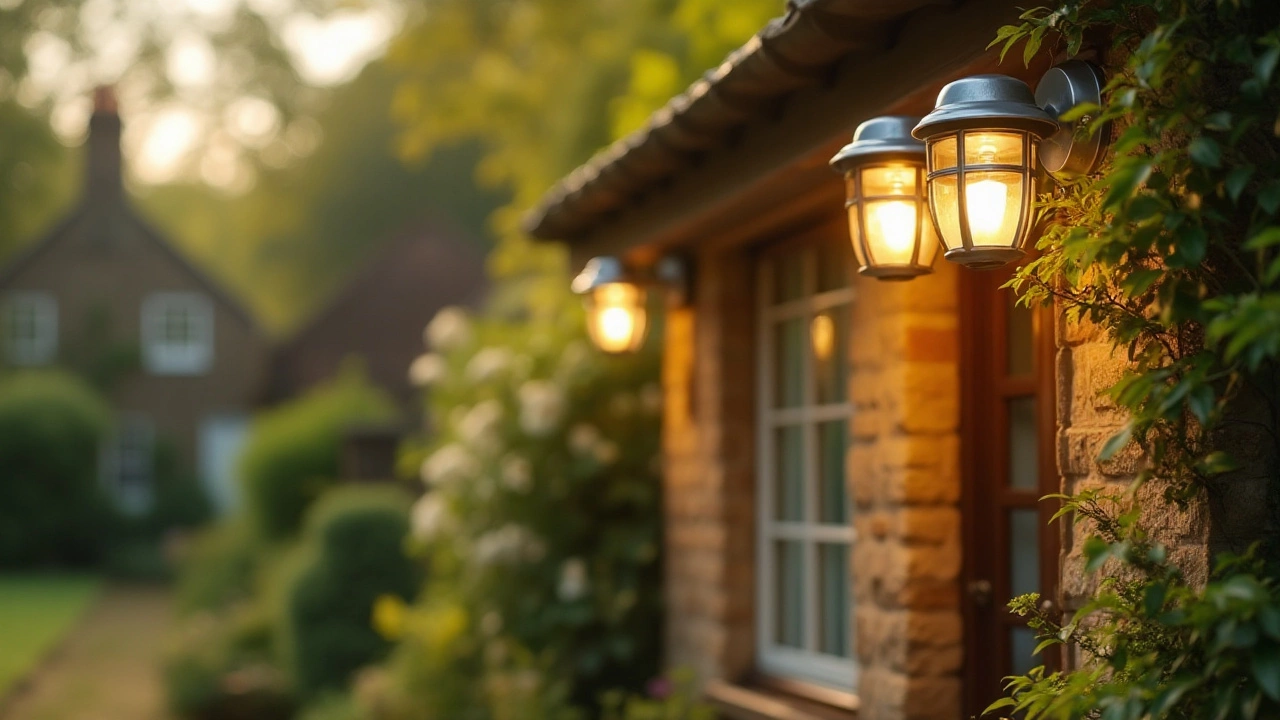
Troubleshooting Common Issues
When your reliable outdoor security LED lights decide to take a night off, it can be more than a minor inconvenience. The good news is, with a bit of detective work, you can often identify and solve the problem on your own. First and foremost, always check the simplest solution: the power source. Make sure that the light switch or breaker hasn't been mistakenly turned off. In many cases, this is the primary culprit behind LED lights not working.
After confirming your power source is operational, take a closer look at the light fixture itself. Sometimes, dust or moisture can infiltrate LED covers or bulbs, becoming a blockade to proper operation. Cleaning the lenses regularly with a soft cloth can often solve this issue and restore your light's brightness. Be mindful of the angles and coverage areas too. Misalignment can restrict the detection range of motion-sensored lights, rendering them ineffective during critical moments.
Next, let's tackle sensor problems. If your LED lights are not activating when they should, the motion sensor could be faulty. Make sure it's free of debris and adjust its settings; a sensor set to 'test mode' might flicker on and off but won't stay lit. Fine-tuning these settings might just provide a straightforward fix. Remember, LED lights have their quirks; as the U.S. Department of Energy points out, they're 'semiconductor-based devices' which can act up when subjected to extreme temperatures or voltage spikes.”
If troubleshooting doesn't lead to a successful repair, then the issue may lie within the wiring. Ensure there are no visible signs of damage such as frayed wires or loose connections. Extreme weather conditions could cause physical damage, compromising the safety and function of the LED lights. In this case, it would be wise to consult or hire a professional to mitigate any hazards while ensuring a sound repair.
| Common Issue | Possible Solution |
|---|---|
| No Power | Check power source and connection |
| Light Flickering | Inspect for loose connections or faulty bulbs |
| No Motion Detection | Adjust sensor settings and positioning |
Always approach these tasks with caution. Safety should be your top priority, so avoid attempting repairs that you're not comfortable with. Equip yourself with knowledge and the right tools before starting, turning what could be a daunting task into a simple fix. With these steps, even without being an electrician, you can have your LED lights up and running in no time, keeping your home secure and brightly illuminated.
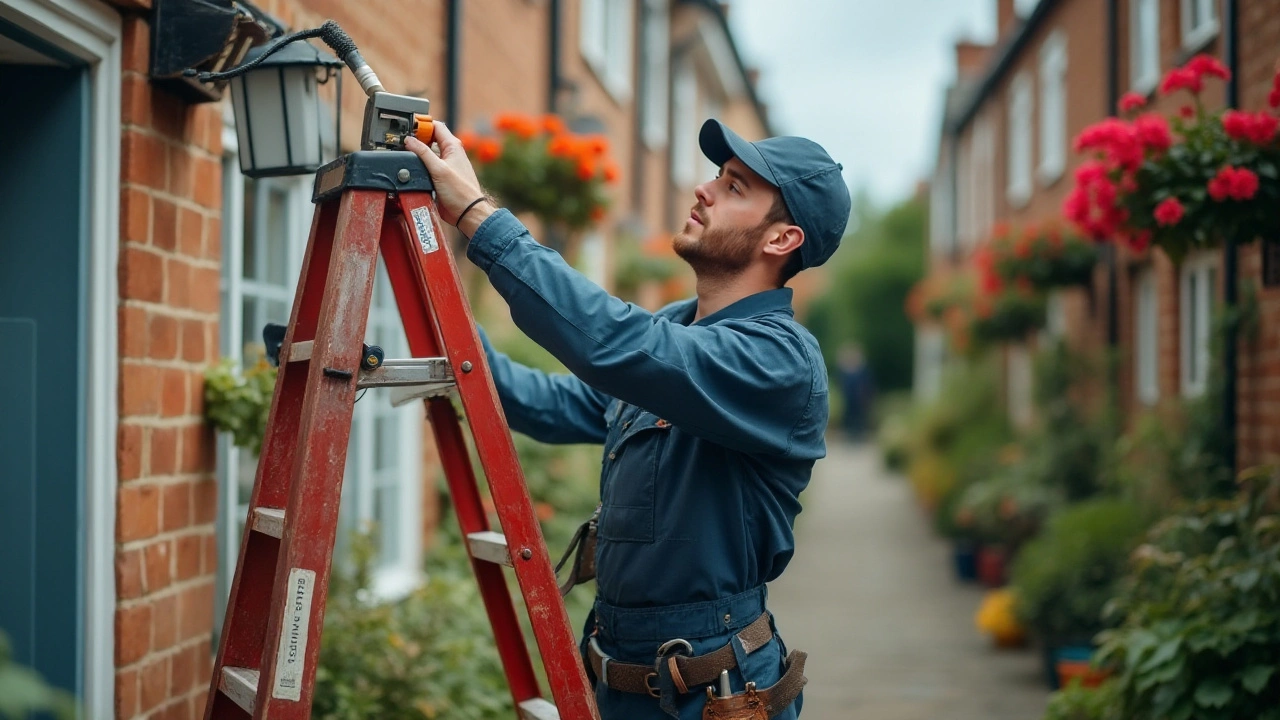
Preventative Maintenance Tips
Regular upkeep of your LED lights can significantly elongate their lifespan and ensure they keep your property secure as intended. Consider incorporating a routine check-up of your lighting systems, at least quarterly, to catch any issues early on. Start by visually inspecting the lights during both day and night. This dual-time check helps identify any physical damage in daylight and potential flickering or dark spots at night. If you spot any dirt or debris accumulated on the light's surface or the sensors, use a soft microfiber cloth to gently clean without scratching.
While it might sound mundane, checking the connection points of wires and ensuring they are well-sealed is vital. Outdoor setups are subjected to various weather conditions, and moisture ingress remains a significant threat. Using weather-resistant sealants or secure coverings can provide an additional layer of protection. Simultaneously, make sure the lighting units are fixed firmly in place. Any loose setups might face damage from strong winds or heavy rains.
Smart Testing
Leverage technology to assist in your maintenance endeavors. Some security lighting systems are integrated with smart home applications that allow you to test and schedule the lights’ on-and-off timings. You can manually trigger these tests to ensure your lights respond correctly to control commands. It’s prudent to replace any light bulbs or batteries well before the end of their expected life cycle, as a precaution rather than waiting for them to fail.
"An ounce of prevention is worth a pound of cure," advised Benjamin Franklin, and in this context, it’s an apt reminder that small, consistent checks are invaluable.
Consider keeping a log of your maintenance checks, recording dates, issues noted, and actions taken. Over time, this can highlight any recurrent problems, giving you the information to make well-considered decisions, whether it’s tweaking the system or upgrading to a better solution. Specific statistics suggest that properly maintained LED lighting fixtures can last up to 50,000 hours, translating to nearly six years of uninterrupted illumination. Such logs could also be beneficial if you consult a professional, providing them with necessary background information at a glance.
Installing energy-efficient solutions not only reduces your power consumption but also minimizes the maintenance demands. With myriad options available today, look for technologically advanced models that promise lower energy usage and higher durability. Both these factors naturally result in fewer maintenance requirements, ensuring prolonged, hassle-free operation. If needed, map out a regular schedule for replacing parts or making upgrades. This strategic approach to maintenance allows for better allocation of time and effort, keeping your outdoor security lights in prime condition.
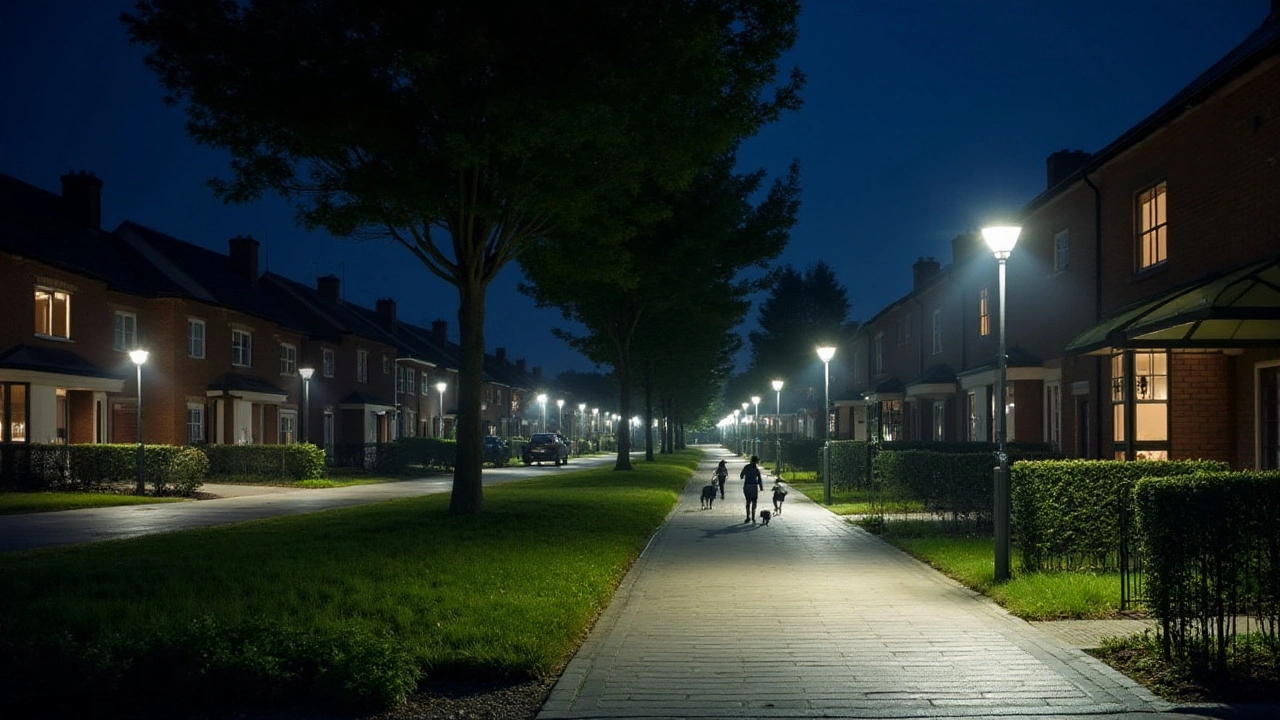
When to Call in the Experts
While it can be satisfying to tackle home repairs on your own, there comes a time when it's best to call in the professionals. Knowing when to seek expert help can save you both time and money in the long run, especially with something as crucial as outdoor security. LED lights, although often durable and efficient, can run into complex issues. Electrical malfunctions, for instance, might not just be a simple change of bulb issue but something far more complicated. It could be a problem with the wiring, which demands an adept hand, or even a deeper issue within your electrical circuit that poses potential safety hazards.
When you’ve exhausted the simple fixes and your outdoor LED security light still refuses to function properly, it might be time to reach out. This is particularly true if you observe flickering lights that don’t stabilize after bulb replacement or resetting the unit. Such issues can indicate problems with the power supply or internal damage to the light fixtures. Additionally, continuous tripping of circuit breakers when the lights are turned on is a clear sign that an expert's intervention is necessary to prevent further electrical issues or even a possible fire hazard.
If your LED lights are under warranty, it's wise to consult the manufacturer's service. They might provide repair services, replacement, or professional guidance without additional cost. However, if your lights are out of warranty and repairs are beyond your skills or tools, hiring a qualified electrician could be the best course of action. LEDs have specific electronic components which can be delicate, and using the wrong tool or applying excessive pressure during a DIY fix could cause irreparable damage.
The choice of an expert also depends on the quality of service they can provide. It’s crucial to find someone who specializes in LED technology to avoid any amateurish work that could potentially worsen the situation. “Hiring a certified electrician can ensure that the job is done right the first time,” says lighting consultant, John Greenfield.
"Choosing the right professional not only restores your lighting but also maintains the system’s longevity".
Sometimes, it's not just about fixing the immediate issue but also about preventing future occurrences. Professionals can carry out a thorough check of your lighting system, ensuring that it is up to standard. Regular maintenance from a professional might not seem necessary at first glance, but it can catch warning signs early and prevent larger problems down the road, saving you money and providing peace of mind regarding your property’s safety.

